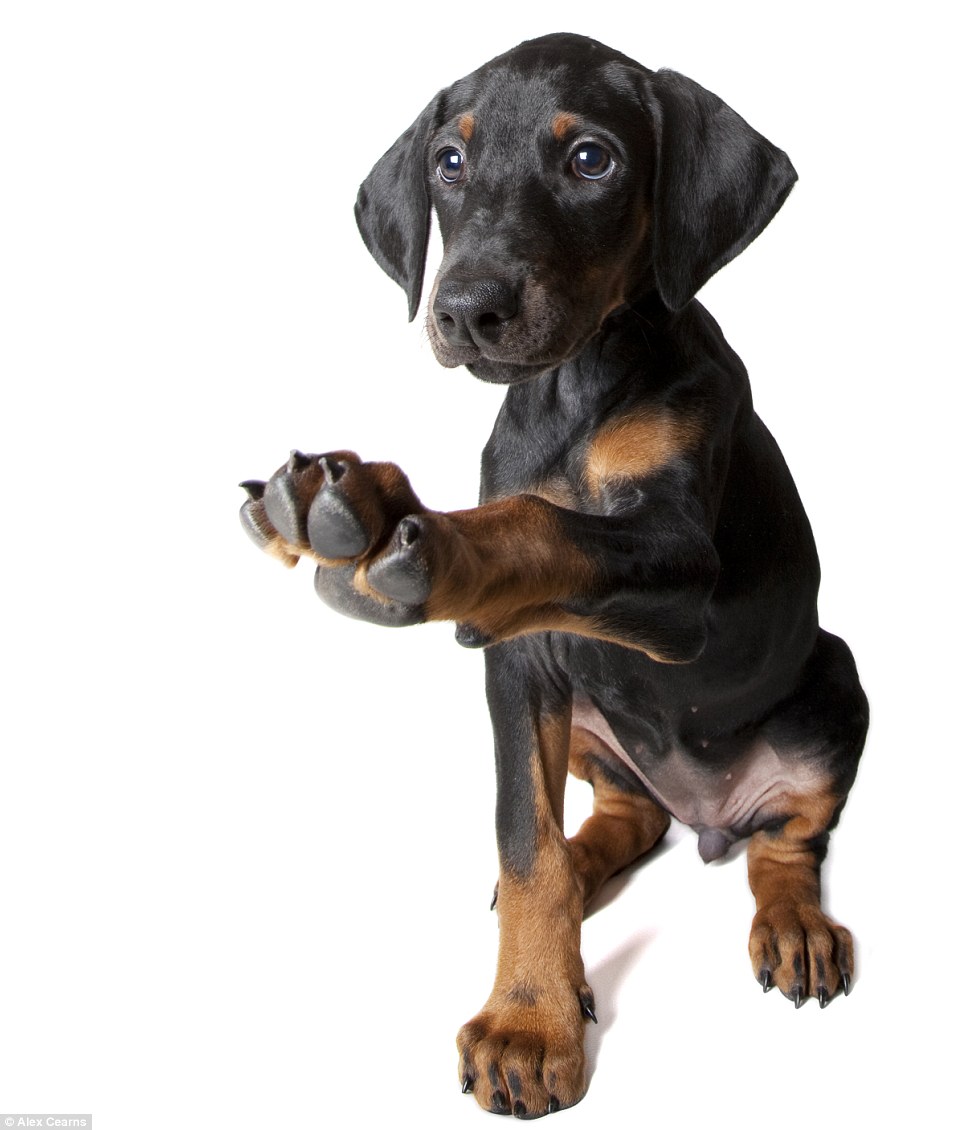As spring takes hold and moves towards the summer, the plants start to grow again and belting through long grasses and shrubbery can pose an occupational hazard for a dog where foreign bodies (FBs) are concerned.
FB’s such as grass seeds can often be found having entered the ears, nose, eyes, vulva or skin and especially the area between the toes.
The dog then shakes its head, sneezes, paws at the wound or licks it vigorously due to the discomfort and possible infection it can cause.
The body tries to eliminate the object by creating a local bursting abscess. If this is the case, keep the wound clean until it heals by bathing in salt water (a simple dilution of one tea spoon of salt dissolved in a large cup of warm water will suffice) or with something like Hibiscrub which is an anti microbial skin cleanser (remember if you are using Hibiscrub, this must be diluted until it only has a very slight tinge of pink colouration to it. If left too concentrated, it will sting the wound and be very uncomfortable for your dog). 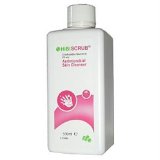 Do not allow your dog to lick or nibble the area (if you have problems keeping his lordship off the wound, check out our blog on preventing licking at Licking Wounds/Stitches
Do not allow your dog to lick or nibble the area (if you have problems keeping his lordship off the wound, check out our blog on preventing licking at Licking Wounds/Stitches
Please remember that foreign bodies such as a grass seed (and even a microchip!) can migrate throughout the body so the FB itself may not actually have come to rest at the place where it entered the body in the first place. For this reason if you can see an entry wound but cannot detect the foreign body, please do check above and around the wound site in case it has migrated elsewhere. You are looking for swelling or hardness of an area, redness, warmth or oozing of any wet or pus-like material. If the seed has infected the tissues, don’t be surprised if the foot itself swells up – this can be quite alarming as the paw and leg can swell to sometimes 3 or 4 times the normal size when infection sets in. Obviously, should you see any swelling or detect any warmth, please see your vet urgently. Do not leave a FB in your dog’s skin.
The following photographs were sent to us by Helen Nolan from when her beautiful Ridgeback suffered from the effects of a grass seed. In the first picture you can see a very sorry and sad face, paw lifted, waiting to see the vet. In the second picture is an easily visible swollen toe; the kind of thing you need to be looking for when examining an injured pet. The next picture shows how the the toe is swollen, red, sore and weeping as fluid and blood stained plasma is leaking out from where the grass seed is irritating with its sharp barb. The next picture shows the toe once the seed has been removed. The toe was shaved and stitched leaving a lovely clean wound. The final picture is that of a beautiful healed toe … good job Helen and thank you for sharing your pictures with us all here at Rhodes 2 Safety. xx
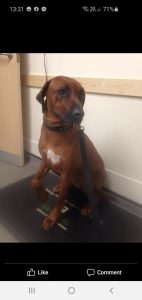
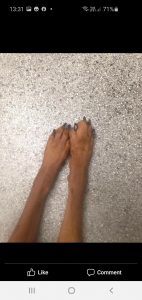
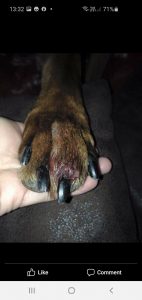
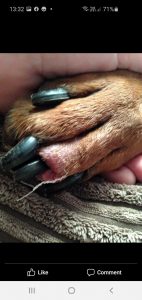
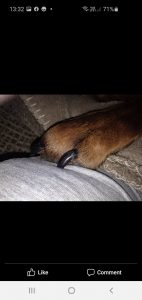
If the dog is limping and you cannot see the object or any sign of where it may be, bathe the foot several times daily in tepid salt water (a teaspoon to a cup as mentioned above) until the object comes to the surface of the skin and can be easily removed.
Application of a dab of Manuka honey will keep the wound clean and also help the skin to heal naturally (provided your dog doesn’t decide to lick it off!) in which case, simple cleansing until it is fully healed should be just fine – again salt water or Hibiscrub is great for this.
Keep a close eye on your dog from the point of view of the abscess or swelling itself, but also watch out for any changes in his behaviour which may alert you to infection spreading within his system.
N.B. Grass seeds have barbed tips so may be difficult to remove, in which case always take your dog to your vet for professional attention if you cannot get it out simply by yourself. Excessive picking and poking can make the situation worse.

